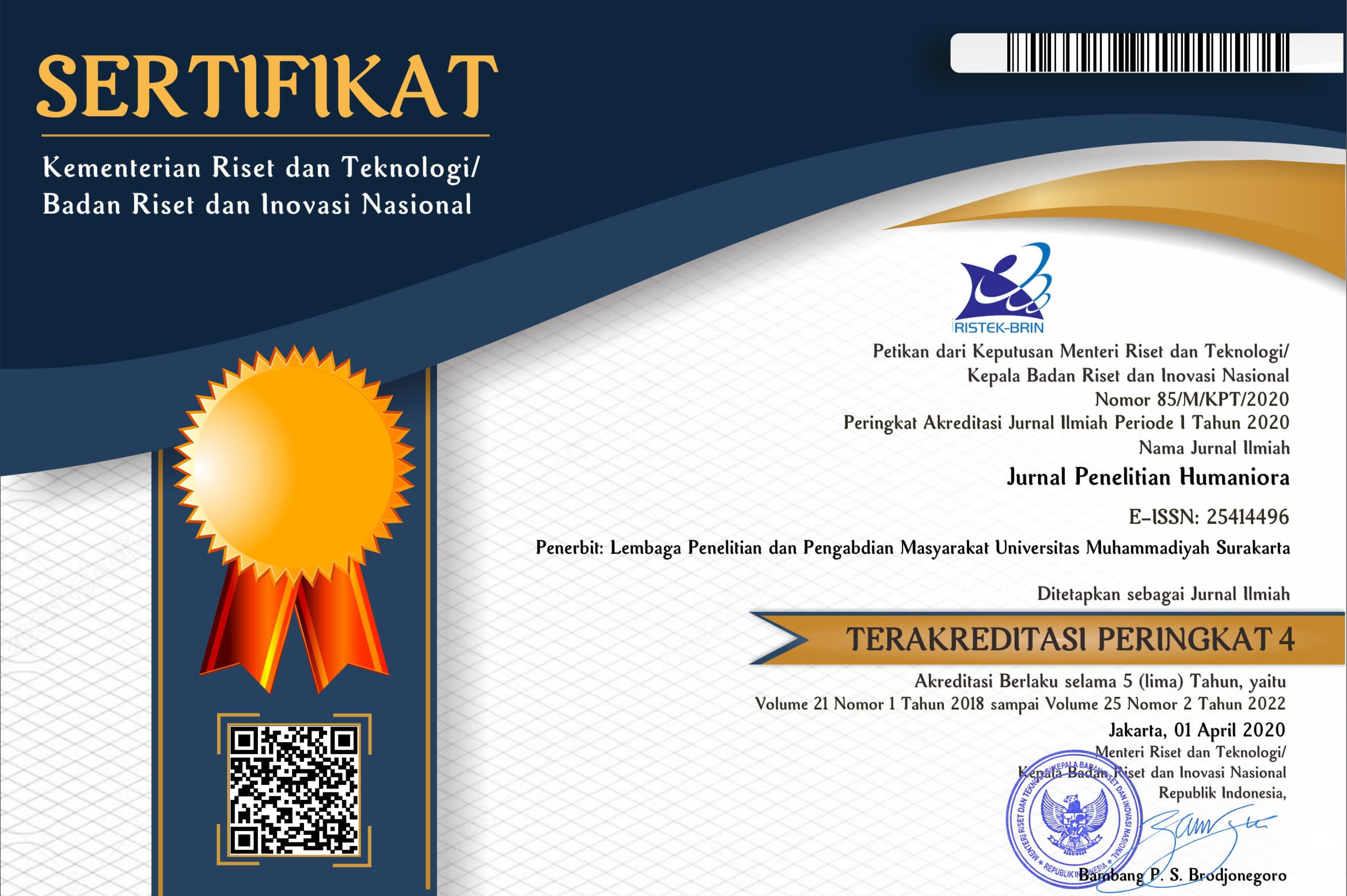THE SECONDARY EFL TEACHERS’ TEACHING STRATEGIES DURING COVID-19 OUTBREAK
Imansyah Imansyah(1*), I Made Permadi Utama(2)(1) Universitas Pendidikan Mandalika
(2) Universitas Pendidikan Mandalika
(*) Corresponding Author
Abstract
Keywords
Full Text:
PDFReferences
Cahyono, Y., & Widiati, U. (2010). The Teaching Of EFL Reading In The Indonesian Context : The State Of The Art Bambang.
Clancey, W. J. (1995). A Tutorial on Situated Learning. In: J. Self (Ed.), Proceedings of the International Conference on Computer and Education (pp. 49-70). Charlottesville, VA: AACE.
Cummins, J. (1986). Empowering minority students: A framework for intervention. Harvard Educational Review, 56, 18-36.
Derakhshan, A. (2015). The challenges of teaching English language: The relationship between research and teaching. International Journal of Linguistics Vol. 7(1), 102-110.
Diaz-Rico, L. (2008). Strategies for Teaching English Learners (2nd ed.). Boston, MA: Pearson Education, Inc.
Echevarria, J., & Vogt, M., & Short, D., (2018). Making Content Comprehensible for Secondary English Learners: The SIOP Model.
Hamruni. (2009). Strategi dan Model-Model Pembelajaran Aktif Menyenangkan.Yogyakarta: FakultasTarbiyah UIN SunanKalijaga Yogyakarta.
Harmer, J. (2007). The Practice of English Language Teaching. Harlow: Longman.
Herrell A. L. & Jordan M. (2004). Fifty strategies for teaching english language learners (2nd ed.). Pearson/Merrill Prentice Hall.
Khan, I. A. (2011). Challenges of Teaching/Learning English and Management. Global Journal of Human Social Science. Vol. 11, Issue. 8, pp. 69-77.
Orlich, D.C., Robert J. Harder., Richard C. Callahan., Michael S. Trevisan., Abbie H. Brown., and Darcy E. Miller. (2010). Teaching Strategies: A Guide to Effective Instuction. Belmont: Wadsworth Cengage Learning.
Patrick, S., Kennedy, K., & Powell, A. (2013). Mean What You Say: Defining and Integrating Personalized, Blended and Competency Education.
Richards, J. C., Platt, J., & Platt, H. (1992). Longman Dictionary of Language Teaching and Applied Linguistics. London: Longman.
Silver, W.L., Ostertag, R., Lugo, A.E. (2000). The potential for carbon sequestration through reforestation of abandoned tropical agricultural and pasture lands. Restor. Ecol., 8 (4) (2000), pp. 394-407
Wright, A. (1989). Pictures For Language Learning. New York, NY: Cambridge University Press.
Article Metrics
Abstract view(s): 583 time(s)PDF: 538 time(s)
Refbacks
- There are currently no refbacks.











